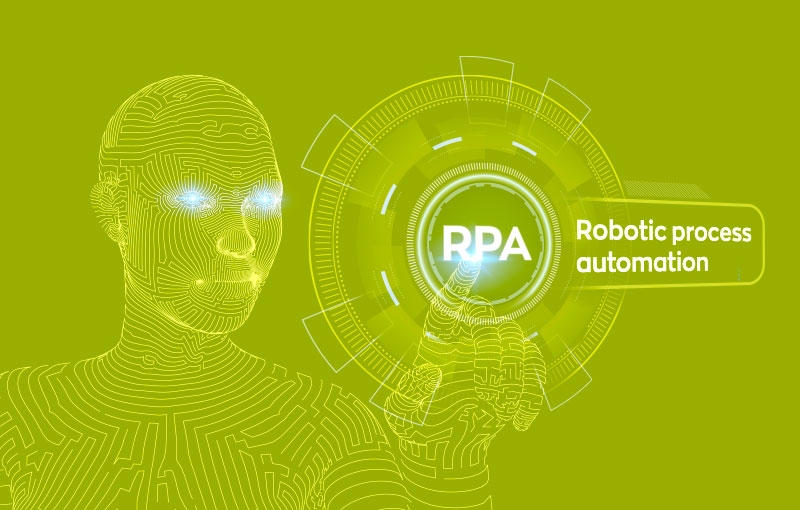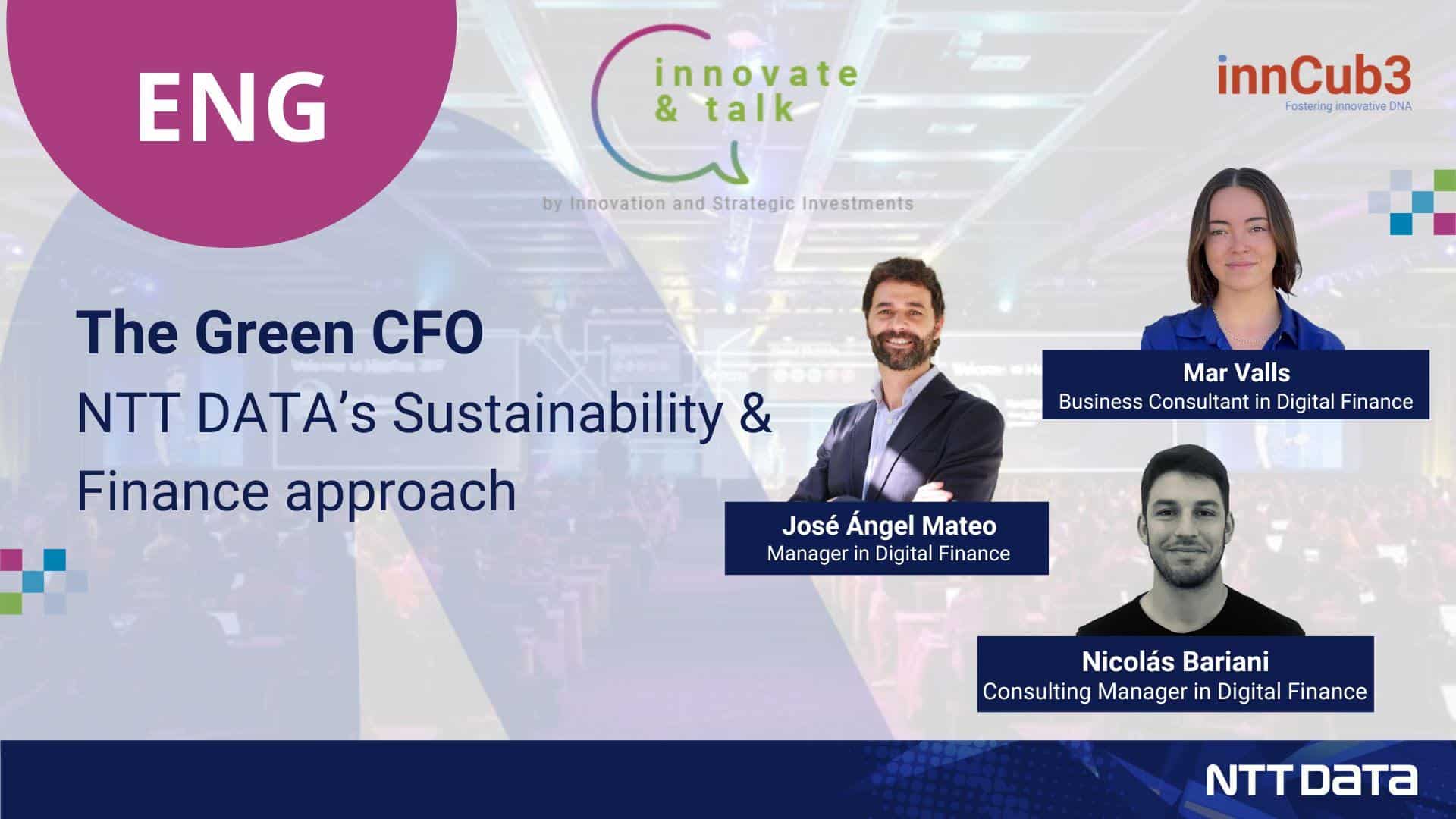In the wake of disruption spearheaded by smart automation and a networked economy, digital technologies are blurring the lines between humans and machines. Cloud, mobility, big data, artificial intelligence and blockchain are driving the next industrial revolution and dramatically reshaping financial systems with Finance 4.0, and organizations that fail to embrace these changes run the risk of being left behind.
So what can organizations do to sharpen their competitive edge in a disruptive business environment?
The new reality requires CFOs and their finance teams to take on a more proactive and strategic role within the organization, adopting new technologies to enhance decision-making and create predictive data models that offer actionable insights, rather than just reporting on the past. Moreover, in order to reap the benefits of next generation technologies, a change in mindset and strong business partnering are critical to success and must be advocated across the board. Therefore, finance executives must be capable of implementing the right mix of talent and technologies to address the emergence of new, data-driven business models as they embark on their digital journey.
Robotic process automation (RPA) is helping to transform finance departments by streamlining workflows and automating time-intensive manual processes such as reporting, end-of-month accounting, accounts payable, auditing and regulatory compliance, dramatically reducing processing time and eliminating process errors. This involves the deployment of software robots than run on top of existing IT infrastructure and interface with applications to automatically extract and process large volumes of both structured and unstructured data from different source systems using scripts and machine learning technology.
But more importantly, reducing time-consuming finance functions frees up CFOs so they can focus on more strategic aspects of the business and unlock their true management potential. By increasing the visibility and timeliness of relevant financial information that reliably represents operational conditions, RPA typically delivers on 5 value areas:
- Reporting, planning and budgeting
- Period end close
- Master Data Maintenance
- Policies Maintenance
- Revenue assurance
- Tax reporting: record to report
- Internal audit and control
- Recruiting
- OtC: Customer Invoicing, Credit Communications, deliveries follow-up, Collections & Customer follow-up
- PtP: Vendor Invoicing, Reconciliation POvsInvoice, Delivery notes & Payments
- Controlling: Pricing & Reporting
- Treasury: Cash Pooling, Reconciliation, Revaluation
- Taxes: reconciliation, accounting and payments
- Integration of Bank accounting
- Reconciliation
- Order to Cash
- Invoicing
Case Study
While traditional finance transformation projects are aimed mainly at improving reporting processes, unlocking added value hidden in overwhelming volumes of data and organizational restructuring, RPA takes these projects to the next level by streamlining processes, guaranteeing traceability, avoiding duplicity and eliminating human error.
This is especially useful for organizations seeking to transition towards a delivery model based on a shared services center, as in this case, an international group engaging in the design, development and manufacture of metal automotive components with an annual revenue of Euros 8 million which operates worldwide (except in Australia).
The project consisted of the centralization of five plants in Mexico, which required standardizing the financial processes in order to be subsequently robotized. Once standardized, the financial processes were prioritized and ten were selected for centralization in a single location, after which they were robotized in accordance with volume and business criticality. The first processes to be robotized were accounts payable and accounts receivable, both of which had a significant impact on the business, followed by investments. The robotization of the other processes is currently under way and the shared services center is in operation.
At this stage of the project, at everis we know that change management is critical to the success of the project and are marking the difference by helping the group to design the most appropriate strategy.
Two alternative service models
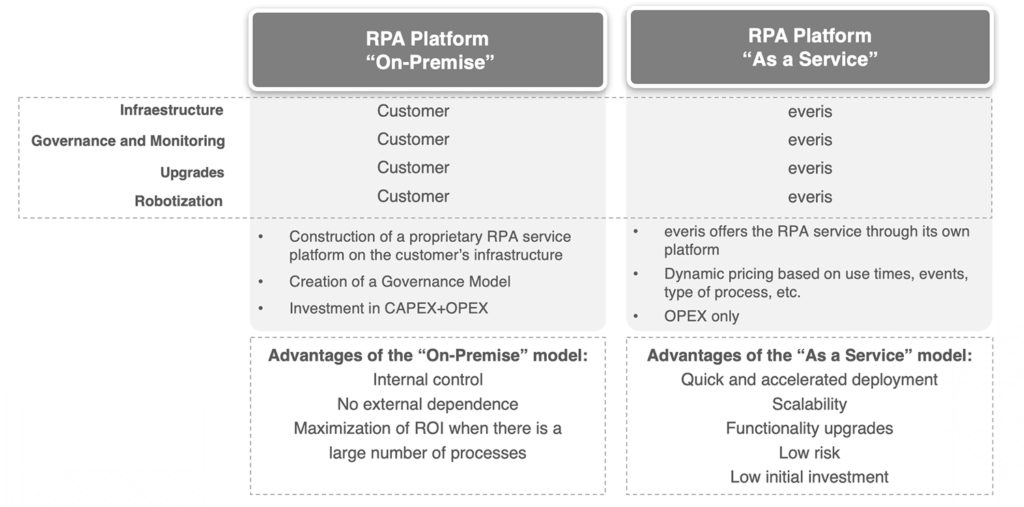
RPA at everis, a differential value
However, the successful adoption of new technologies is a complex process. At everis we accompany organizations at every step of their digital journey with highly qualified professionals, a comprehensive service offering and partnerships with market-leading technology providers:
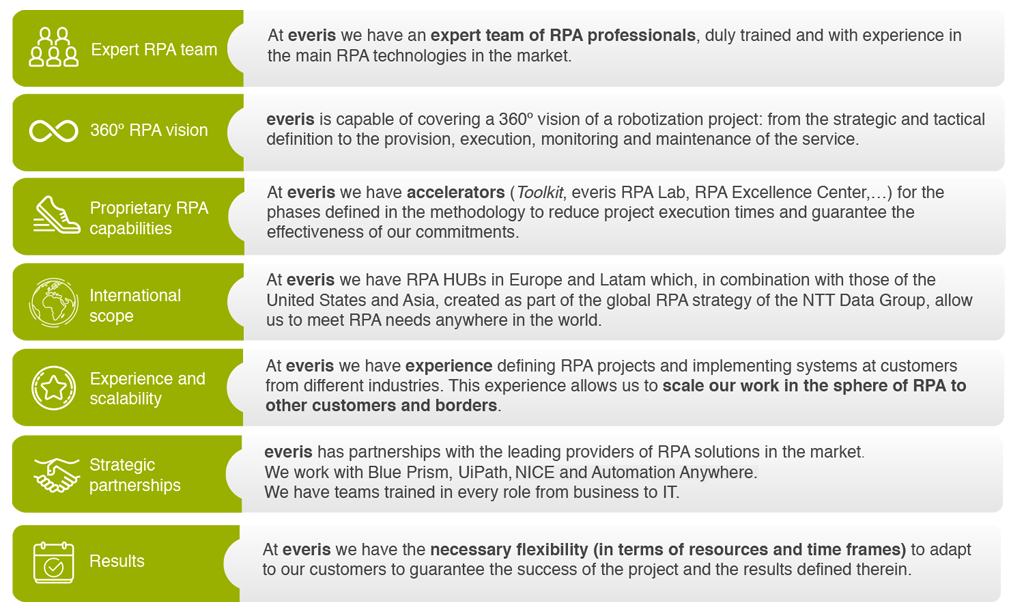
At everis we approach RPA initiatives with an E2E vision, from the conceptualization of the Corporate Model to the implementation, optimization and maintenance of the service:
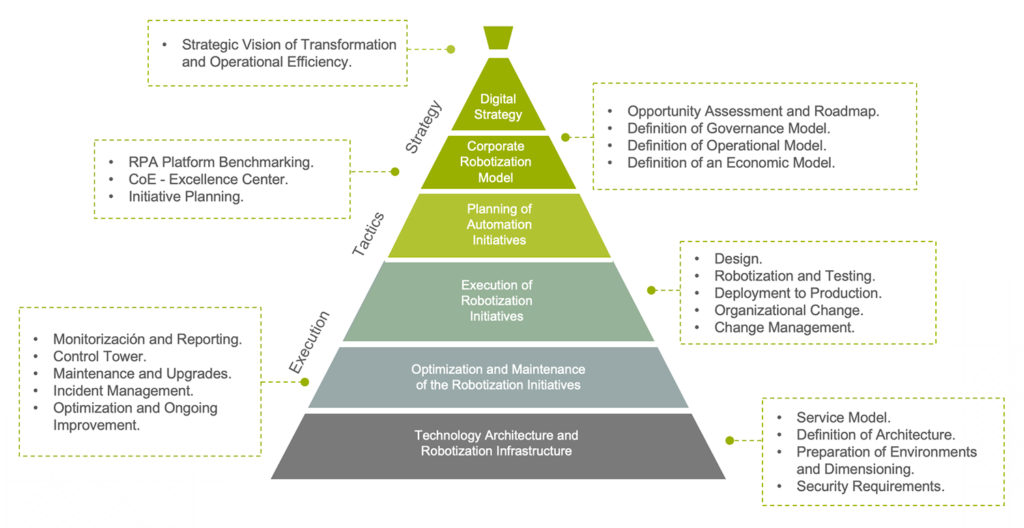
everis RPA Transformation Roadmap
At everis we understand RPA deployment in an organization as a RPA transformation roadmap necessary to deploy RPA as a strategic corporate line:
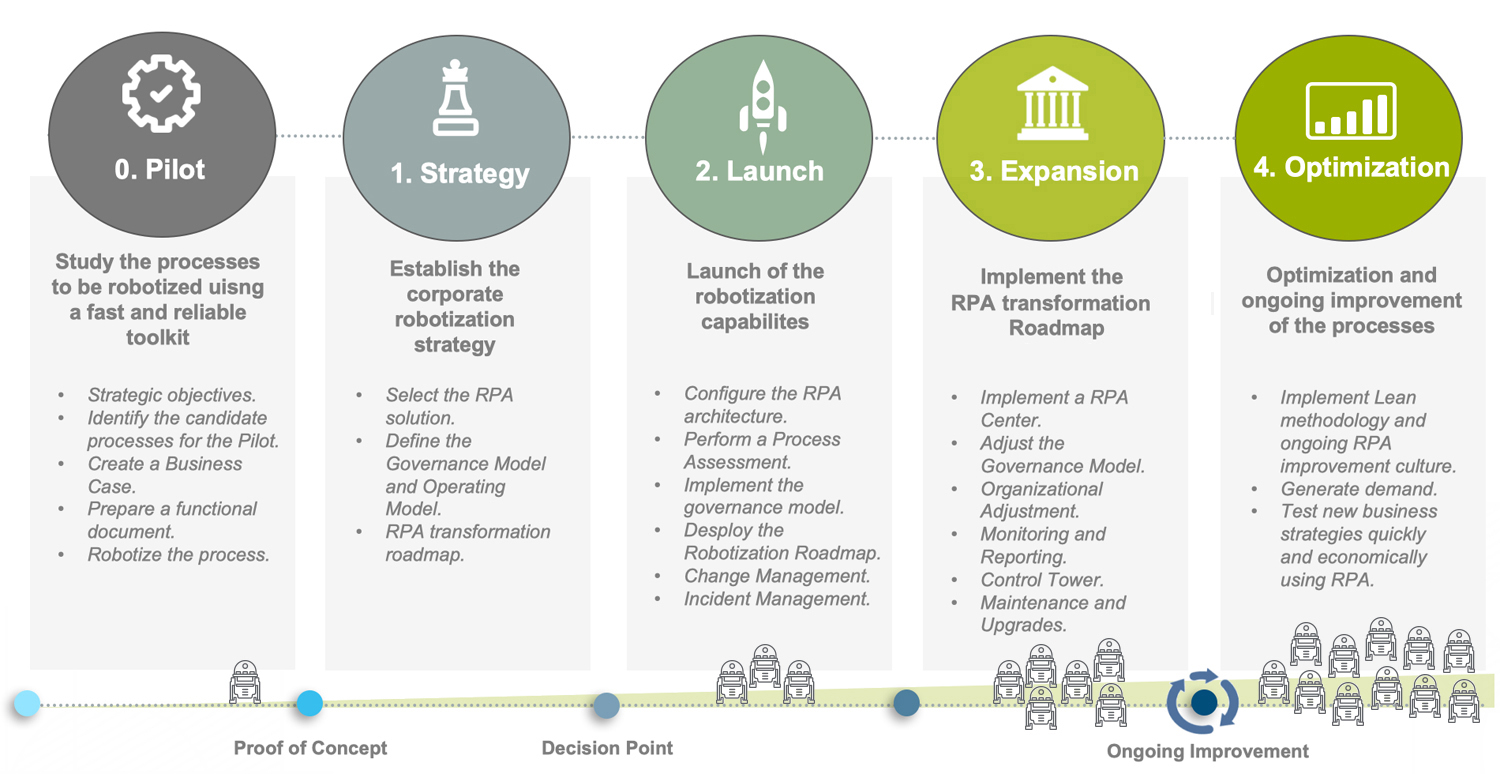
Proven Methodology
RPA Strategy
Governance Model
We have developed a framework for defining a corporate robotization Governance Model, which is developed based on seven main aspects: Processes, Robotization, Governance, Change Management, Infrastructure/Architecture/Systems, Technology and Integration, Operation.
Opportunity Assessment
Service alternatives
There are two service models within the sphere of automation solutions: deployment of an RPA solution in an “On-Premise Platform” or selection of a service “As a Service” using cutting-edge technology.
Cost Model: "On-Premise".
We present a cost structure associated with the maintenance of a RPA platform in an on-premise or cloud infrastructure owned by the customer.
Cost Model: "As a Service"
We present an associated cost structure if the everis RPAaaS is selected as a service model, in our solution based on market RPA solutions.


